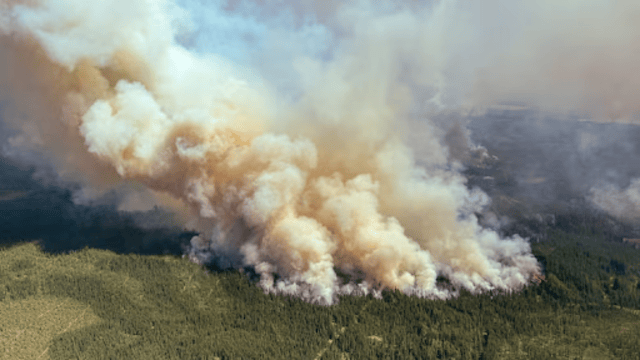
Smoke from Canadian wildfires makes air worse in the eastern U.S. and Midwest. Los Angeles Times
Thick smoke from Canadian wildfires darkened skies across the eastern U.S. on Wednesday. The smoky air caused poor visibility and raised serious health concerns. Many cities from Kansas City to Minneapolis reported unhealthy air levels. Officials warned people to limit outdoor activities.
Schools Keep Children Indoors
In Stoughton, Wisconsin, kids at Nature’s Garden Preschool had to stay inside. The school usually lets children play outdoors, but the smoke changed their plans. Assistant teacher Bailey Pollard said the smoky sky looked like a storm. Instead of playing outside, the children spent their day with Play-Doh and coloring activities.
Pollard said, “Nobody wants to stay inside all day,” but the staff had to protect the kids’ health.
Alerts Spread Across States
Iowa released a statewide air alert through early Thursday. Officials warned residents to stay indoors and avoid outdoor work or exercise. Wisconsin and Michigan gave similar warnings. In the Upper Peninsula of Michigan, people were told to close windows, avoid outdoor workouts, and watch for trouble breathing.
Several states in the Northeast—like Vermont, Maine, and New York—also reported moderate air quality concerns. People with health problems were told to reduce outdoor time.
Minnesota Faces Air Quality Trouble
Minnesota issued an alert for nearly the whole state. On Tuesday, the Twin Cities had some of the worst air in the country. Dr. Chase Shutak from Children’s Minnesota said more patients came in with breathing issues like asthma. He explained that polluted air may have caused those symptoms.
The air improved by Wednesday. The air quality index (AQI) dropped from over 200 to around 60. While Tuesday’s level was "very unhealthy," Wednesday's level was considered "moderate."
Understanding the AQI Scale
The AQI shows how clean or dirty the air is. It ranges from green (safe) to maroon (hazardous). Most unhealthy areas in the U.S. on Wednesday appeared red on the AQI map. Northern Iowa, Wisconsin, and Michigan had some of the worst levels, with AQIs around 160.
This number reflects how dangerous the air could be for people, especially those with heart or lung problems. The main problem is tiny particles in the smoke that enter the lungs.
Smoke Reaches Europe
These wildfires have affected more than just North America. Smoke has even been seen in the skies over Europe. Experts say the smoke traveled high into the atmosphere and moved east across the Atlantic Ocean. Though it is not expected to affect air quality on the ground in Europe, it shows how big and strong these fires are.
Canada had its worst fire season in 2023, and 2025 is looking almost as bad. Most of the smoke now is coming from fires burning near Winnipeg in Manitoba.















